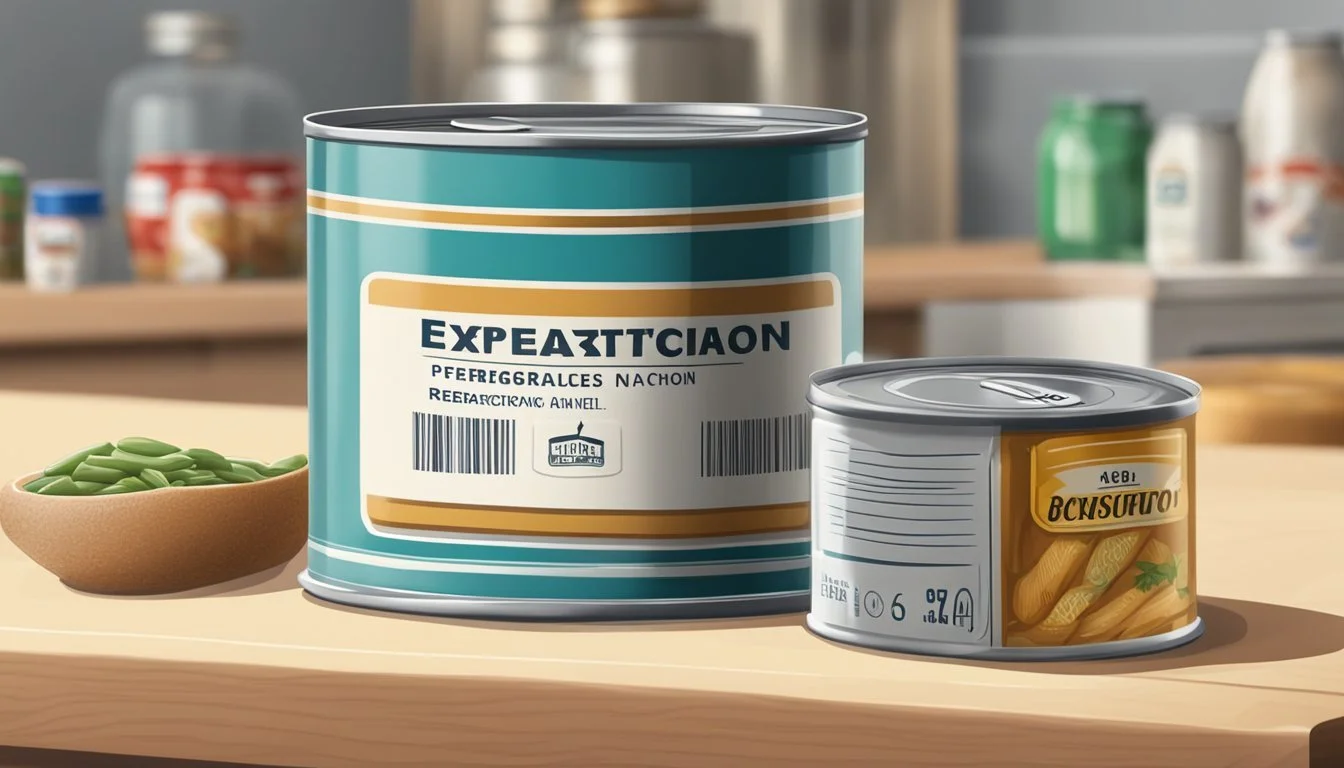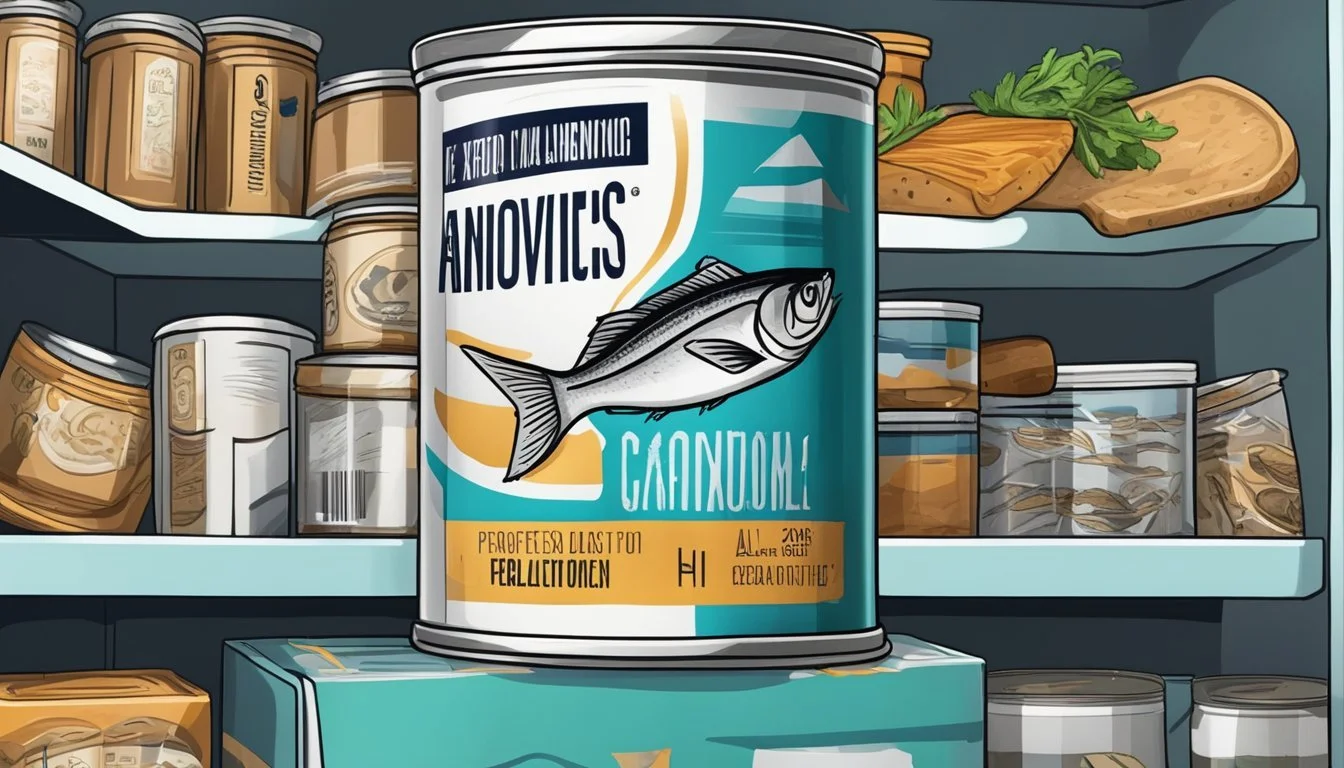Is it Safe to Eat Expired Anchovies?
Understanding Shelf Life and Food Safety
Expired food often raises concerns about safety, and anchovies (What wine goes well with anchovies?) are no exception to this scrutiny. The misconception that an expiration date is a hard-and-fast rule for food safety—a date beyond which edibles become hazardous—can lead to unnecessary waste. When it comes to products like anchovies, which are preserved through salting and canning, understanding the nuances of their shelf life is key.
Anchovies are a durable staple in many pantries, valued for their ability to impart deep umami flavors to dishes. Due to their preservation process, they inherently boast a lengthy shelf life. While a date stamped on the packaging indicates peak quality, it does not necessarily dictate the moment after which these fish become unsafe for consumption. Consumers can observe some simple indicators of quality—such as appearance, smell, and texture—to determine the usability of their anchovies, despite the elapsed expiration date.
Understanding Anchovies and Their Preservation
Before diving into the intricacies of anchovy preservation, it is essential to understand that these small fish are naturally rich in protein, iron, and omega-3 fatty acids, contributing to heart health. Proper packaging and storage are key to maintaining their nutritional value and longevity.
Characteristics of Anchovies
Anchovies are small, forage fish with a distinct, robust flavor. High in nutritional value, they provide an ample amount of protein, iron, and omega-3 fatty acids. These nutrients are beneficial for heart health, and the preservation process aims to maintain these properties.
Anchovy Packaging Methods
Anchovies are typically preserved in two ways: immersed in oil or packed with salt. This process is essential for maintaining the quality and extending the shelf life of the product. Once packaged, anchovies can be offered to consumers in tin cans or glass jars, which are often sealed to create an airtight environment, preventing spoilage.
Ideal Storage Conditions for Anchovies
For unopened canned or jarred anchovies, the ideal storage conditions play a pivotal role in preserving their quality. The following table summarizes the optimal environment:
Storage Factor Requirement Temperature Room temperature: 50°F to 70°F (10°C to 21°C) Environment Cool, dry area like a pantry or cupboard Airtight Container Essential for opened anchovies
Under these conditions, unopened anchovies typically last between 3 to 5 years. Once opened, storing them in a cool, dry place in an airtight container is crucial to maintain quality, and they can last for a couple of months when refrigerated.
Expiration and Shelf Life
The safety and quality of expired anchovies hinge greatly on their shelf life, storage conditions, and the understanding of what expiration dates signify. It is imperative for consumers to recognize that the dates stamped on canned or jarred anchovies are not definitive indicators of spoilage but markers of peak quality.
Determining the Expiration Date
Most canned or jarred anchovies bear a "best before" date which indicates the window during which the product is expected to retain optimal quality. To determine this date, manufacturers consider various factors including the method of preservation and the type of packaging used. It is essential to note that even past this date, anchovies may still be safe to consume provided they have been stored correctly and exhibit no signs of spoilage.
Assessing Anchovies Past Expiration
When evaluating anchovies that have passed their best before date, one should:
Inspect: Check the can or jar for dents, rust, or bulging, all of which can indicate contamination.
Smell: A potent or unpleasant fishy odor can be a sign of spoilage.
Visual Assessment: The anchovies should retain their normal color without any noticeable discoloration.
It's important to trust one’s senses; if the anchovies look, smell, and if applicable, taste normal, they may still be safe to eat.
Factors Affecting Anchovy Shelf Life
Several factors play into how long a can or jar of anchovies can last, including:
Storage Environment: A cool, dry area is ideal for prolonging the shelf life of canned or jarred anchovies.
Packaging Integrity: Compromised packaging can lead to early spoilage.
Preservation Method: The type of preservation (e.g., oil, salt) can also affect shelf life.
Typically, unopened anchovies can last for two to five years when stored properly, although the exact period can vary. Once opened, anchovies should be refrigerated and usually remain consumable for up to two months.
Safe Consumption of Expired Anchovies
When it comes to anchovies that have passed their expiration date, safety depends on proper storage and signs of spoilage. Consuming expired anchovies can be safe if they're unaffected by spoilage.
Signs of Spoiled Anchovies
Odor: Anchovies should emit a mild, briny scent. A strong, rancid odor suggests spoilage.
Color: Fresh anchovies possess a silvery hue. Dark brown or black discoloration indicates that they are no longer safe to consume.
Texture: They should be semi-soft to the touch. If they are mushy or have an abnormal texture, they are likely spoiled.
Risks Associated with Spoiled Anchovies
Consuming spoiled anchovies can lead to food poisoning, as the decomposition process makes them a breeding ground for bacteria. Symptoms can include nausea, vomiting, and diarrhea. Spoilage is a clear sign that the anchovies pose a risk for foodborne illness and should not be consumed regardless of the expiration date.
Storage Techniques Post-Opening
Once anchovies are opened, their shelf life decreases significantly. Proper storage is crucial to extend their usability and maintain their flavor and safety.
Refrigerating Opened Anchovies
Opened anchovies should be transferred from their original packaging to an airtight container before being stored in the refrigerator. This prevents the anchovies from absorbing odors and flavors from other foods and maintains their quality. Proper storage in the refrigerator can keep anchovies safe and with optimal flavor for up to 2 months.
Transfer Anchovies: Remove from can; place in an airtight container.
Cover with Oil: Submerge the anchovies in oil to create a barrier against air.
Freezing Options for Longevity
Freezing opened anchovies can extend their shelf life beyond refrigeration times. They should be stored in a freezer-safe container or bag with as much air removed as possible. Label the package with the freezing date for future reference.
Freezing Steps:
Place anchovies in a freezer-safe container or wrap tightly in foil.
Press out excess air if using a bag.
Freeze for up to 6 months for best quality.
By following these methods, individuals can ensure their opened anchovies remain safe to consume and flavorful for future culinary use.
Culinary Uses and Substitutes
Anchovies serve as a versatile ingredient in numerous recipes, delivering a power punch of flavor to dishes. They are especially valued in cuisines that prize a deep umami taste.
Enhancing Flavors with Anchovies
Anchovies are a staple ingredient renowned for their ability to add a rich, salty, and umami flavor to a variety of dishes. They are often used to elevate the flavors in pasta sauces, Caesar salad dressing, and as a savory topping for pizza. Packed in oil, canned anchovies are convenient and ready to use, often finely chopped or mashed into a paste and melted into sauces or dressings to impart a robust flavor. Fresh anchovies can be filleted, salted, and added to salads or as part of a seafood spread. When it comes to enhancing flavors, a little goes a long way with anchovies, often just a filet or two suffices.
Substitutes for Anchovies in Recipes
When anchovies are unavailable or if a substitution is desired, there are several alternatives that can mimic their deep, savory essence:
Soy sauce: Offers a similar salty and umami profile, suitable for dressings and sauces.
Sardines: Although larger and not as strong in taste, sardines can be used in place of anchovies to provide a comparable fishy flavor.
Tapenade: Olive-based spreads can be substituted in some recipes.
Worcestershire sauce: Contains anchovies but can be used in small amounts to provide a similar depth of flavor.
Seaweed: Provides umami flavor and can be used in vegan and vegetarian dishes (What wine goes well with vegetarian dishes?).
When substituting, gauge the intensity of the replacement to avoid overpowering the dish. For dressings like a Caesar salad, adding a bit of lemon juice or extra olive oil can help balance the flavors in the absence of anchovies.
Identifying Quality Anchovies
When selecting anchovies, one must pay close attention to their appearance and smell as well as ensure their packaging is intact. The flavor and nutritional value are also key factors in determining their quality.
Visual and Textural Indicators
One should look for anchovy fillets that have a uniform coloration; fresh anchovies should be a silvery-grey, while preserved anchovies may have a brownish tint due to the curing process. Discoloration, such as dark brown or black spots, can indicate spoilage. The texture is another crucial indicator; quality anchovy fillets should be intact and exhibit a certain firmness. If the fillets are mushy or they feel slimy, it may be a sign that the anchovies have gone bad. For salt-packed anchovies, the presence of salt crystals is normal, but they should not show signs of mold growth or have a slimy coating.
Flavor Profile and Nutritional Value
The flavor of anchovies should be pleasantly salty and fishy, without an overpowering or rancid taste. Any bad or foul odor is a clear sign that the anchovies are no longer fresh. Anchovies should taste like the sea, not like bacteria-induced decay. Nutritionally, anchovies are a source of important nutrients including omega-3 fatty acids. However, if they've been compromised by improper storage or if an opened can has been left unrefrigerated, these benefits can be overshadowed by the health risks of consuming spoiled fish. Quality anchovies, whether in a can or jar, should have been stored in a cool, dry place, and once opened, the fillets should remain submerged in oil or brine to maintain freshness and hinder bacterial growth.







